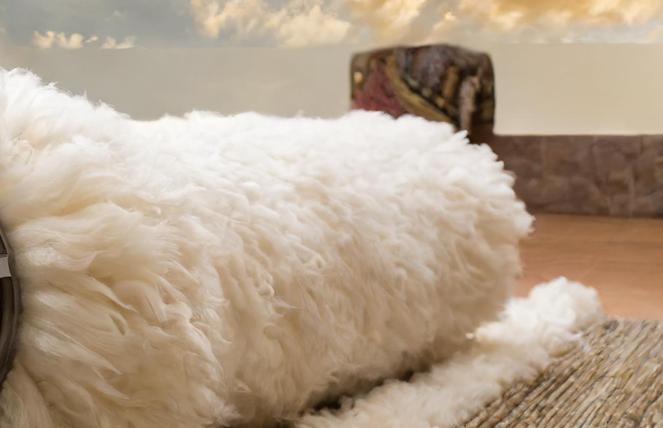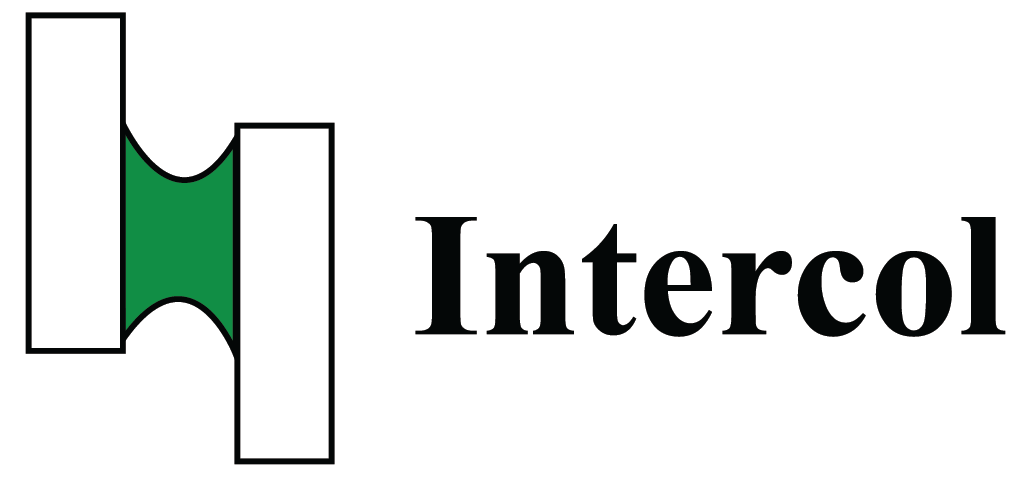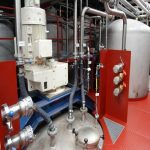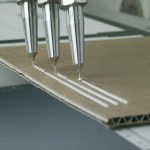Intercol dispose de différents composés pour revêtir les tapis après leur tuftage. Nos composés VAE en particulier améliorent la qualité des tapis.
- Bonnes propriétés mécaniques et d'adhésion à de nombreuses fibres
- Très compatible avec de nombreux fils et fibres thermoplastiques utilisés. Le VAE en tant que tel est souvent fourni sous forme de dispersion, après séchage, le film est un film thermoplastique de VAE.
- VAE est soluble dans l'eau alcaline ou les solvants doux, ce qui favorise la séparation et le recyclage des moquettes.
- Le VAE peut être stabilisé à l'aide de plusieurs tensioactifs, mais il peut également être fourni sous forme de poudre sèche.
- Le VAE est utilisé dans de nombreux composés hautement chargés pour les moquettes.
- à très faible teneur en COV, favorisant un environnement intérieur sain
- la prise en charge des moquettes difficilement inflammables, favorisant la sécurité à l'intérieur et à l'extérieur (par exemple pour le gazon artificiel, qui peut être considéré comme une "moquette d'extérieur")
Tufting de tapis
Tapis tuftés est un processus qui transforme le fil en moquettes pelucheuses et durables.
- Origine et fabrication:
- Le terme "tufting" tire ses origines de l'ancien artisanat européen, où les artisans brodaient les tapis avec des touffes décoratives.
- Dans le cas du tufting moderne, une aiguille perce un support, créant ainsi des boucles. Ces boucles ajoutent de la texture et de la dimension au tissu.
- Si les boucles sont coupées, on obtient un "poil coupé", qui ressemble à une surface de velours.
- Processus:
- La machine à touffeter (ou pistolet à touffeter) joue un rôle essentiel. Elle insère rapidement le fil dans le tissu et le fixe en place.
- Le touffetage permet de créer des motifs et des textures variés, ce qui en fait un choix polyvalent pour les moquettes.
- Les couleurs et les motifs peuvent être appliqués par teinture à la pièce, par teinture à la tournette ou par impression sur des tapis blanc cassé.
- Types de touffes de moquette:
- Moquette Broadloom: Rouleaux continus de moquette tuftée convenant aux grandes surfaces.
- Carreaux modulaires: Petits carrés de moquette tuftée, pratiques pour des placements spécifiques.
- Types de fibres:
- Fibres naturelles: Dérivé de la nature (par exemple, laine, coton).
- Fibres synthétiques: Fabriqué par l'homme (par exemple, nylon, polyester, polypropylène).
- Applications:
- Espaces commerciaux: Les bureaux, les hôtels et les espaces publics bénéficient des moquettes tuftées.
- Usage résidentiel: Les tapis tuftés ornent les maisons, leur apportant confort et style.
- Le rôle de Mannington:
- Mannington, avec des décennies d'expérience, a été un acteur clé dans le domaine du tufting de la moquette.
- Leur engagement en faveur de la qualité garantit des moquettes performantes, esthétiques et durables.
En résumé, le tufting allie savoir-faire, technologie et créativité pour tisser de magnifiques moquettes qui embellissent nos espaces.

Revêtement des moquettes
Les soutien d'une moquette joue un rôle crucial dans ses performances globales et sa durabilité.
- Sécuriser Tufts et Strength: Le dessous d'un tapis, également connu sous le nom de "backing", sert à fixer les touffes (les fils individuels) en place. Il fournit résistance supplémentaire et stabilité dimensionnelle à la moquette. La plupart des moquettes ont deux couches de support:
- Support primaire: C'est là que se trouve le fil tufté en au cours du processus de fabrication.
- Support secondaire: Le matériau extérieur qui ajoute du soutien et de la stabilité.
- Types de dossier de moquette:
- Support standard:
- Fabriqué en fibre de jute naturelle ou en polypropylène synthétique.
- Disponible en version tissée ou non tissée.
- Léger et résistant à la moisissure.
- Idéalement adapté pour les zones à faible trafic dans les applications résidentielles.
- Soutien à la performance:
- Offres stabilité à plus haute dimension et la force par rapport au support standard.
- Arrêts fermeture éclair (lorsque les bords s'effilochent) et fournit une meilleure propriétés de liage des touffes.
- Recommandé pour environnements commerciaux et les zones à fort trafic.
- Utilisé dans les installations à collage direct.
- Garanties renforcées.
- Support haute performance:
- En général unitaire (un revêtement épais appliqué directement sur le dos du tapis).
- Conçu pour environnements commerciaux exigeants.
- Fournit la durabilité à long terme et protège contre les taches, les liquides renversés et l'humidité.
- Le latex extra dense empêche la pénétration de l'humidité sous le support.
- Idéal pour les zones à fort trafic et installations collées.
- Support standard:
- Considérations:
- Environnement: Choisissez le dossier en fonction du type d'environnement dans lequel la moquette sera installée.
- Trafic: Évaluer le degré de circulation et d'usure.
- Résistance à l'humidité et aux taches: Déterminer si la résistance à l'humidité et aux taches est importante.
Le dossier est un élément important de la moquette, car il en assure le confort, la longévité et les performances.




